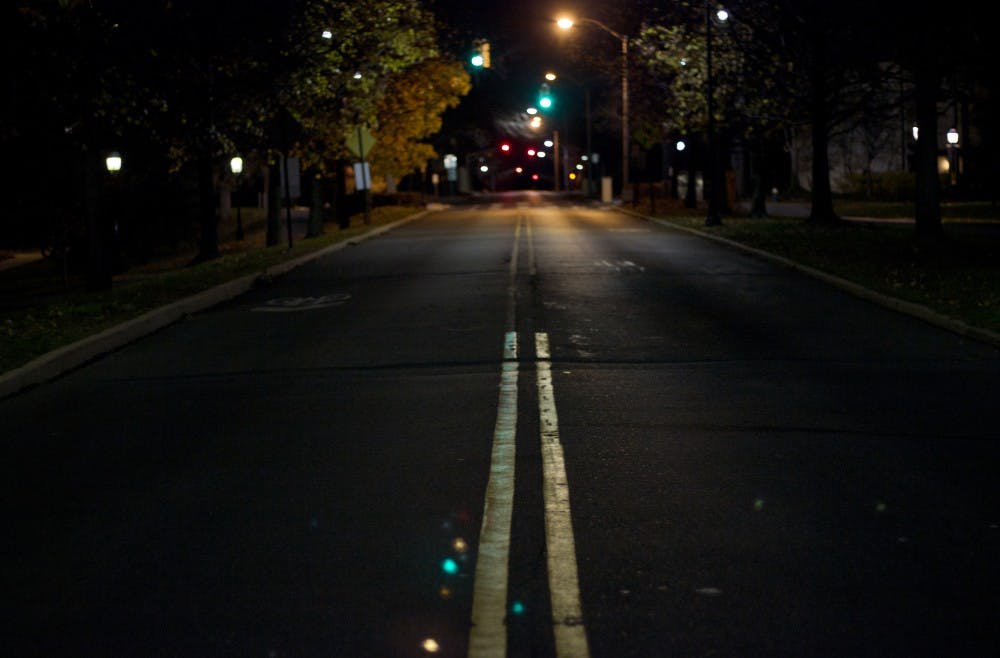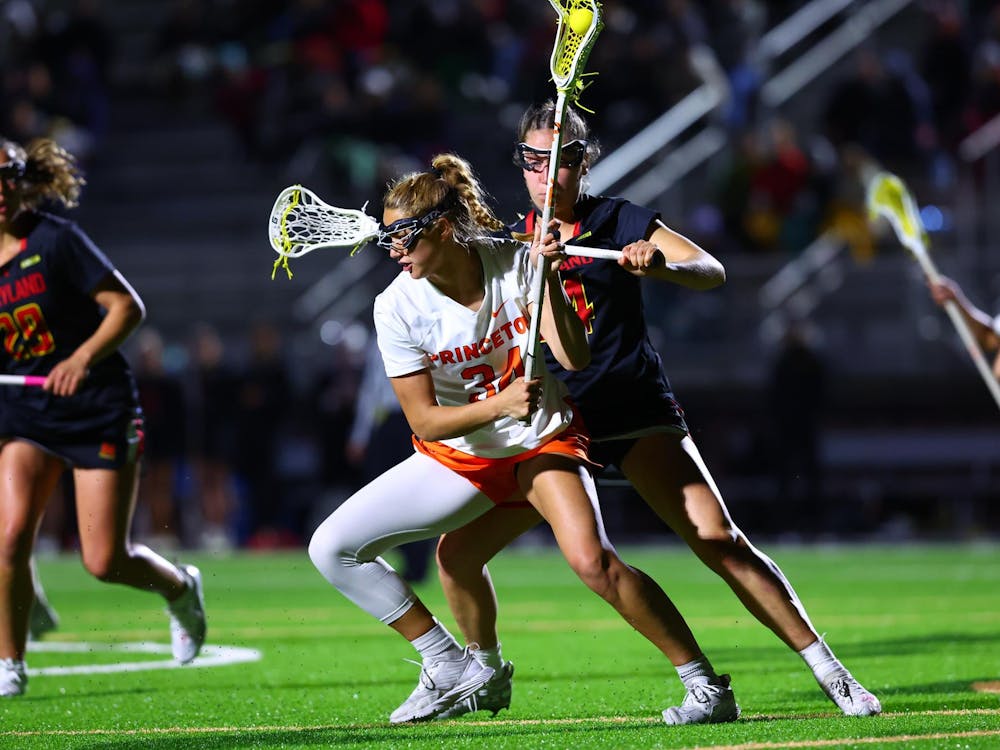A pedestrian fatality at the intersection of Washington Road and Prospect Avenue last month has increased the urgency of ongoing efforts to improve pedestrian safety in the town of Princeton.
At 10:30 a.m. on July 30, 68-year-old physician Michael Reiss was crossing the street at the intersection of Washington Road and Prospect Avenue when he was hit by a Ford F350 pick-up truck, according to a Princeton Police Department statement. Reiss was taken to Capital Health Regional Medical Center in Trenton for treatment and later moved to Penn Presbyterian Medical Center in Philadelphia for further treatment. He died on August 1.
The driver of the vehicle, 42-year-old Antonio Pirone, was issued a summons for failure to yield to a pedestrian in a crosswalk, but all aspects of the crash remain under investigation, the press release notes. Pirone was stopped facing west at the traffic light on Prospect Avenue, attempted to make a left turn onto Washington Road when the light turned green, and failed to observe Reiss who was “approximately half way through the crosswalk” at the time of impact.
“The impact, though at a low rate of speed, knocked Reiss to the ground, causing him to roll and strike the back of his head on the pavement,” the press release reports. According to an obituary published on the McCafferty Funeral Home website, Reiss died due to brain trauma.
Princeton Police Department Sergeant Frederick Williams said the case is now in the hands of the Mercer County Prosecutor’s Office, which will investigate the details of the accident before releasing its final report. Though vehicles are expected to yield to pedestrians at crosswalks, Williams said that Pirone is not necessarily at fault and noted that the Prosecutor’s Office must consider many factors, including where both pedestrian and vehicle were at the moment of collision and if and when the driver saw the pedestrian.
“When a pedestrian is in a crosswalk, if you ignore that, you’re violating the law. Now if you didn’t see that, that’s a different thing,” Williams said. “The investigations determine what factors were at play, what violations occurred, and how to proceed afterwards.”
Williams said that in his opinion, the driver in the recent case did not act in a malicious or negligent manner, saying, “it looks like a tragic situation.” However, the Mercer County Prosecutor’s Office investigation is ongoing, and Prosecutor’s Office Spokesperson Casey DeBlasio said that no updates on the investigation were available at the moment. As of the date of publication, no criminal charges had been filed.

Cars parked along Prospect Avenue.
Photo Credit: Jon Ort / The Daily Princetonian
The intersection of Washington Road and Prospect Avenue has been the source of prior controversy. In a 2018 letter to the editor in the Daily Princetonian, Brian Zack ’72 referred to the intersection as “an accident, and possibly a death, waiting to happen.” In a statement to the ‘Prince’ after the most recent accident, Zack explained that he wrote the original letter because “it seemed — and seems — to me obvious that the current crossing signal arrangement at Washington Road and Prospect Avenue is dangerous.”
“We have all seen the confusion and near-misses,” his original letter notes.
One way to address the issue of safety, U.S. 1 founding editor Richard Rein ’69 wrote in a letter to the editor published in Town Topics, would be the implementation of a pedestrian-only signal phase, wherein all traffic would be stopped with red lights, and pedestrians could cross with green lights. Rein is a former Chairman of the Daily Princetonian.
Last June, the New Jersey Department of Transportation (NJDOT) tested a pedestrian-only signal phase at the intersection of Washington Road and Nassau Street, the site of a 2017 incident in which a left-turning cement truck struck and killed 62-year-old pedestrian Leslie Goodrich Rubin.

In a statement to the ‘Prince,’ Princeton Mayor Liz Lempert wrote that although the town’s request for a pedestrian-only signal phase predated the 2017 incident, “the accident tragically illustrated the need for stronger safety measures.”
According to an NJDOT statement, the pedestrian-only signal phase gives vehicle in all directions red lights and allows pedestrians approximately 39 seconds to cross the intersection in any direction, including diagonally. This phase is initiated 90 to 132 seconds after a pedestrian requests to cross by pushing a button on the existing traffic signal poles.
Lempert’s office reports that such a system results in “significant convenience and safety for pedestrians,” gives pedestrians “a very high feeling of safety,” and resolves “the turning vehicle/pedestrian conflict.” Under the signal phase, however, pedestrians must wait longer to receive a walk signal, as they can only cross during the pedestrian-only phase. In addition, vehicles have less time to pass through the intersection, since “the signal cycle must be split into five phases, four for drivers and one for pedestrians.” This cycle may also increase traffic.
For these reasons, Zack wrote in a statement to the ‘Prince,’ he views the current “test” as “a complete failure.” However, according to the minutes from the June meeting of the Mayor and Council of Princeton, the Council received over 100 survey responses about the test, and “almost all of them were really positive.”
The test was initially scheduled for two weeks in June, but it has since been extended and is still taking place. Lempert wrote that she does not believe the pedestrian-only signal phase has been made permanent. She added that the town has asked NJDOT “for the same treatment at other Nassau Street intersections, including Witherspoon and University Place.”
The minutes from the same Council of Princeton meeting note that Lempert characterized the test as “a huge victory for the town” and explained, “there is a wish list of more intersections where [the] Council would like to see that type of signal go in.”
In his letter to Town Topics, Rein advocated for adding the intersection of Washington Road and Prospect Avenue onto that “wish list.” He wrote that the implementation of a pedestrian-only signal phase there would be an “immediate improvement” after “the fifth serious accident involving pedestrians in less than five years, the second fatality in less than two years,” all of which occurred in “carefully marked pedestrian crossings.”
“Since Prospect Avenue meets Washington Road in a T intersection, there are only two phases of lights needed for motorists. A third phase could be added, halting all traffic on both roads and allowing pedestrians to cross either road, or go diagonally across the intersection,” Rein suggested, adding that pedestrians, particularly University students heading toward their eating clubs, “might welcome the chance to cross diagonally.”

A meeting of the Council of Princeton in 2017.
Photo Credit: Hannah Wang / The Daily Princetonian
Uchenna Ndukwe ’22, who said he witnessed a collision at the intersection last semester, agreed with Rein’s assessment, saying that while “having pedestrians and traffic moving at the same time in the same place” can be done, issues have arisen in the past, and that it is “probably better” to err on the side of caution.
“Obviously it’s going to be annoying for people who are driving to sit through,” he said in reference to the pedestrian-only-phase idea, “but it's clear that the system we have isn’t working, so I think if drivers are waiting a few extra seconds or a few extra minutes on their route, it’s probably better to have everyone safe.”
In her statement, Lempert wrote that the town is “currently working on corridor studies of Witherspoon Street and Hamilton-Wiggins” and that “Washington is also due for a similar review in the near future.” In regards to implementing any new measures at the intersection of Washington Road and Prospect Avenue, Lempert wrote that the town “would likely want to review and propose improvements for the entire corridor, and not just a single intersection.”
Additionally, she wrote that though pedestrian safety along Washington remains a concern, another NJDOT construction project, which will replace two bridges on Alexander Street, makes now an inopportune time to make changes on Washington.
“Alexander will be shut to all car traffic from November through April, and we anticipate heavier volumes on Washington and surrounding roads,” Lempert wrote. “It will be difficult to conduct proper testing of any signal change during this road closure.”
Though Zack disagrees with the idea that a pedestrian-only signal phase should be implemented, he still believes something should be done about the intersection. One potential way to alleviate the problem, he wrote, would be to make the “walk” signal automatic (so pedestrians would not have to press the button). The police department press release did not indicate whether the “walk” signal was on when Reiss was struck, but Zack wrote that making the signal automatic would reduce confusion at the intersection. If this change were to occur, turning cars would always “see that pedestrians have the right to cross,” and Zack believes they would “be more careful.”
Another letter to the editor in Town Topics following the July 30 incident calls for changes to how the town denotes crosswalks, saying that they need to be distinct and that “the pedestrian strip background must be uniform — not patterned — and it must be colored light to bright, white or yellow, [or] better yet chartreuse since it is the color theme Princeton uses at pedestrian crossways already.”
“I have no idea why the dangerous situation at Washington and Prospect has not been addressed,” Zack wrote to the ‘Prince.’ “I hope that the mayor and town council will look carefully at the situation, and make a case for improved safety to the state.”
Pedestrian safety on Washington Road has been a longstanding issue for Princeton residents and University students since before the initial installation of traffic lights at the Washington/Prospect intersection in 1975. Over the years, the town and University have attempted to alleviate the problem through various initiatives, including adding more crosswalks in the late 1990s, installing “flashing” crosswalks in the early 2000s, and building a pedestrian bridge (Streicker Bridge) in the late 2000s to, in the bridge’s donor’s words, “add an important element of safety to what is now a perilous crossing of Washington Road.”
The ‘Prince’ has reported on a number of University-student-involved injuries and fatalities on Washington Road over the past 15 years, including in 2002, when two University first-years were hit by a sedan at the crosswalk in front of Fine Hall; in 2005, when two students were struck by vehicles in a 30 minute span while crossing at different crosswalks; in 2009, when a University first-year was hit by a car while crossing on his bicycle; and in 2015, when a graduate student was hit while crossing near Ivy Lane. Prior to Reiss’ death, the cement-truck incident in 2017 was the most recent pedestrian fatality on the road.
Last semester, Ndukwe said he witnessed a near-miss unfold at Washington Road and Prospect Avenue on his way to the Engineering Quad for an evening lab. While crossing the intersection, he said, a female student walking in front of him was nearly struck by a left-turning vehicle which stopped “inches from her leg.”
“At the time I thought it was just a careless driver,” he said, explaining how in that moment he could only see the “walk” signal, not the driver’s green light. “But I guess the driver did have a green light. Obviously the pedestrian still has right of way, but I can understand how it’s a little confusing.”









